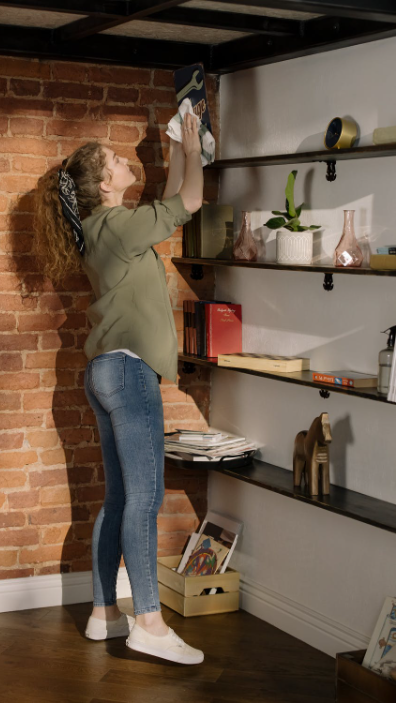When approaching any task, it always pays to work from the ground up: complete the small tasks before getting to the big stuff. The same principle applies to interior design. If you’re wanting to redesign, there are always things you can do before bringing in the big guns. Ever considered how different a space can look by simply rearranging the furniture, or by tidying a space? These simple actions can transform the vibe of any room, all without adding a thing or spending a cent. In fact, sometimes subtraction can be valuable. If you’re thinking of shaking things up a bit, read on to discover how you can personalise your home on a budget. There’s a lot you can do before calling in for expensive renovations!
Contents
Separate the wheat from the chaff
Before thinking about what you can add, think about what you can subtract. You’ve likely heard of Marie Kondo’s book The Life-Changing Magic of Tidying Up: The Japanese Art of Decluttering and Organizing. Though this book sparked controversy—especially among book lovers, who Kondo infamously advised at one point to only keep 30 books—the underlying principles of this book have practical application. As you sort through each item in your home, ask yourself two questions:
- Do you use it?
- If not, does it bring you joy?
According to Kondo, if you answer no to either of these questions, that means you need to leave the item behind. This process can be challenging, but it can clarify which items you truly enjoy and which are gathering dust in your physical and mental environment. Plus, once you’ve conducted a cull, you may find your home has better breathing space. This alone is a great start to personalising your home, especially if you’re aiming for a minimalist look.
Reduce, reuse and recycle
Once you’ve conducted a cull, you’ll a) be more aware of the items in your inventory, and b) have clarity regarding what truly requires replacing. Where possible, you can reuse or revamp existing items to fill gaps you would have otherwise resolved with money. Upon reviewing your home’s inventory, did you unearth anything useful? Perhaps it was hidden in the recesses of your wardrobe or garage.

If you have existing decor, try moving it to a different room. Play around with what you have and see if anything sticks! Image: 1825 Interiors
If you were more like Marie Kondo and didn’t hoard or hold onto items, you could shake things up by changing your furniture layout, or by swapping your wall art and decor between rooms. Consider painting your furniture to match your new aesthetic. Add a colourful knob to a grey pantry or cupboard. Reduce your purchases by reusing or recycling existing items.
Choose personal items
Most people have sentimental attachment to their items. It’s human nature! Your grandfather’s old desk, for example, is a family heirloom you may want to use in the study. You could replace some of your current wall art with some paintings you haven’t hung for years. Got an artistic sense? Perhaps you could paint some yourself. Talk about art on a budget! By displaying treasured knick-knacks from your personal history, you not only personalise your space, but you also don’t spend a cent. It’s a win-win.

Curate collections of kitchenware that match your favourite colour scheme.
Choose items that ‘look’ expensive
If you’re redecorating on a budget, extremely expensive purchases are out of the question. There’s no reason why you can’t select items that ‘look’ expensive but that are, in actuality, affordable. Kmart lamps, for example, mimic modern lighting designs and look great—for a fraction of the price. Another alternative is to thrift or buy vintage. Thrift shops are currently trending for a reason. They are a goldmine of pre-loved goodies, which are usually in good nick—and often less than half the price of their original market value. Vintage items (often available in thrift shops) are usually inexpensive, and some people find the vintage look to be charming. It can add a real old-timey feel to your space, if that’s your thing.

Hot tip: keep your eyes peeled for furniture sales. You may be able to sneak some quality items on the cheap!
Despite being on a budget, sometimes it’s important to consider material durability. For example, marble is a durable (and stylish) benchtop material that will last. The cheaper a material, the more low-quality it can be, so be mindful that larger purchases can be worthwhile. Think of them as investments in quality that will require minimal maintenance over time (rendering them cheaper in the long run).
Final thoughts
Hopefully these tips will help get you started on some low-budget styling strategies. Personalising your space means different things to different people. For example, if you’re wishing to take your revamp as far as renovation, then you will need to look beyond these first steps. If you’re simply looking to spruce up your environment to reflect your personality, these hacks are a great place to start. Always work with what you’ve got, look for cheaper alternatives, and remember that subtraction can be more powerful than adding extras.




